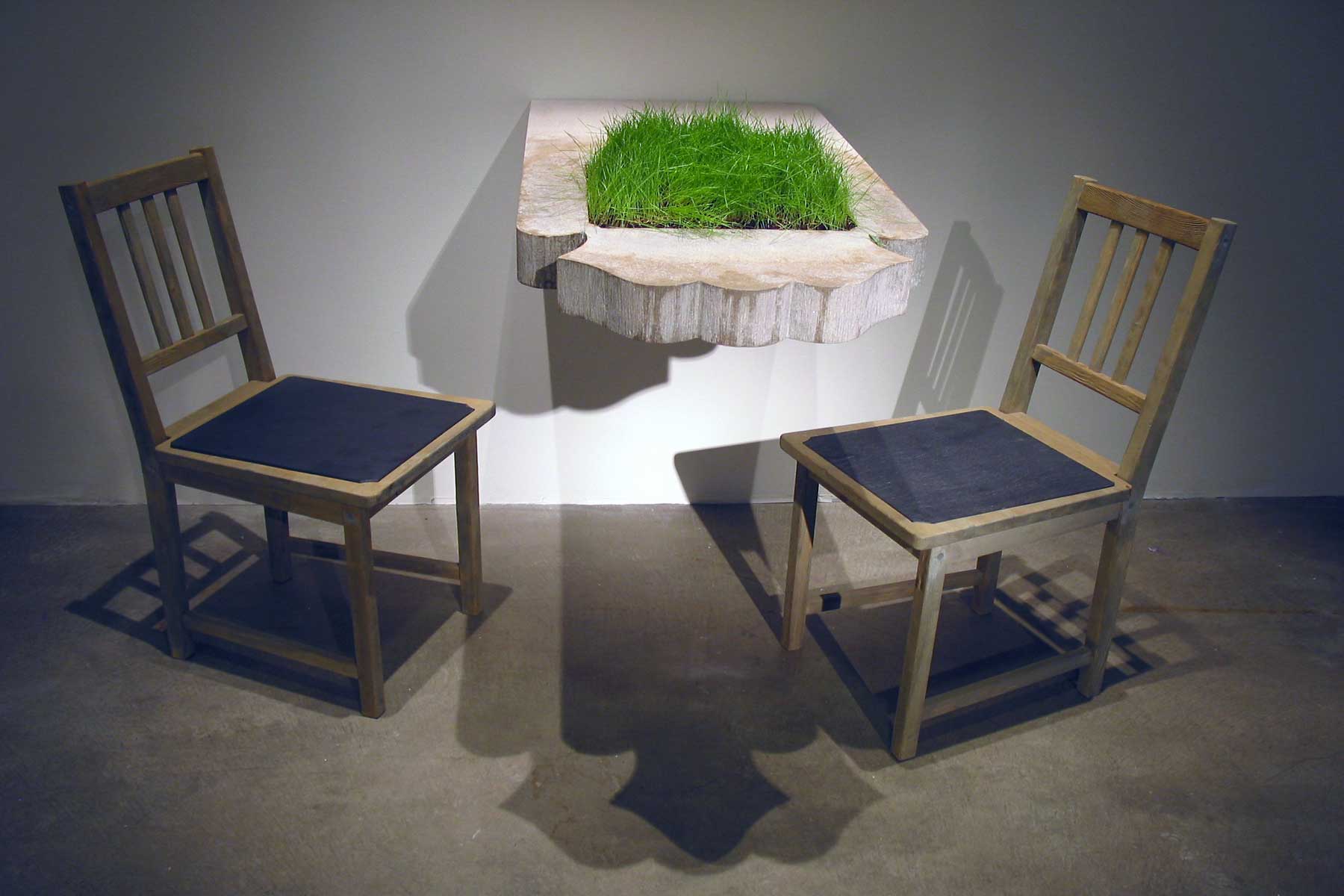Ex Cathedra
2005 | Ex Cathedra consists of a limestone slab shaped into a “headstone.” In contrast to normal use and expectation, the headstone projects outward from the wall with no visible means of support, denying both the weight of the stone and the inevitability of death. Grass grows in the center of the stone in the area where text is usually carved. Slate chair seats repeat the shape where the grass grows, and each slate will have marks suggesting preparation for lettering the names of the dead.
This piece is intended as a contemporary Vanitas. The use of traditional materials provides a re-connection with the reality of death in a contemporary world where death is largely an abstraction. The title and the presence of the chairs combine to empower the viewer and hopefully lead to an understanding of death as a natural and accepted element of life. Vanitas is a message for the living. Because we have no power over death, Vanitas ultimately serves as an invitation to the sort of self-reflection and contemplation that is too often missing from contemporary life.
Ex cathedra, a Latin term (from the seat/throne), describes authoritative statements in Roman Catholicism. The phrase colloquially has come to refer to statements made with the kind of authority that brooks no argument. The Vanitas concept stands for the vanity of humankind and the brevity of life, which is expressed in Vanitas painting by juxtaposing a symbol of life with one for death. The idea of each one is strengthened in the pairing. Death does not seem so hopeless when the image of regeneration is ever present; the image of life seems ever more precious when it is shown to be fleeting. (Lerman 1988)

